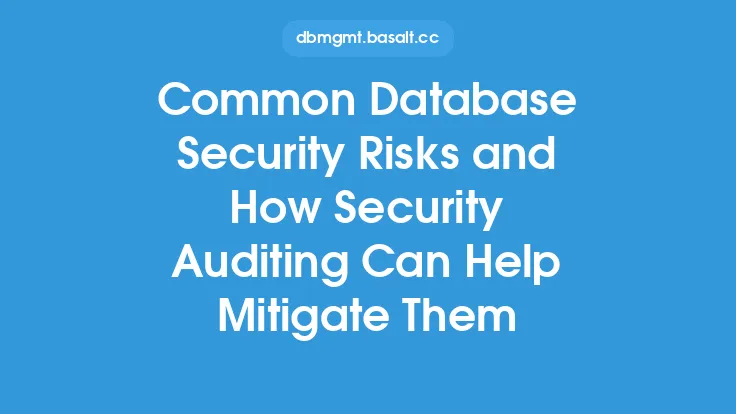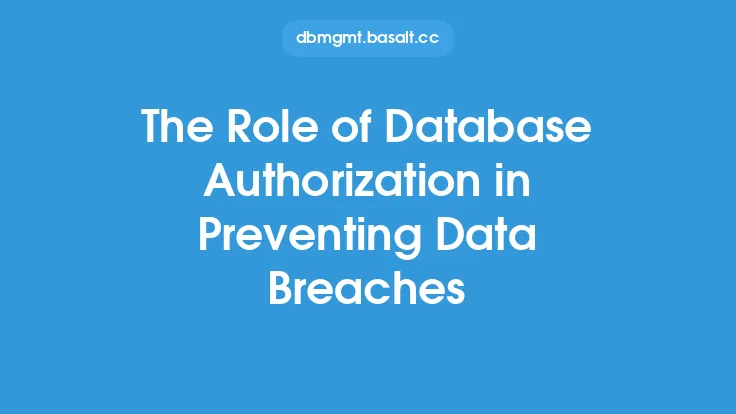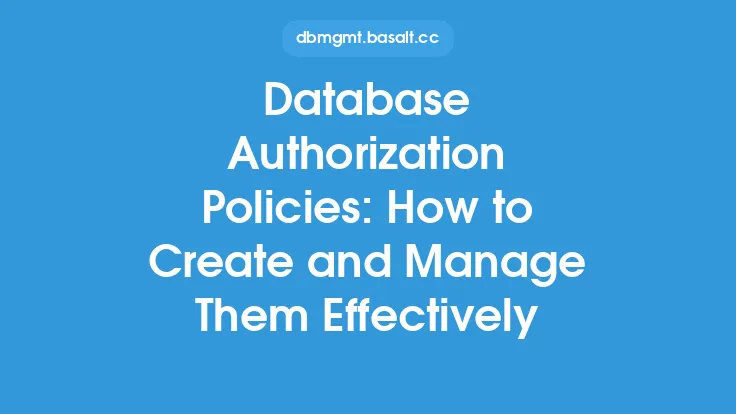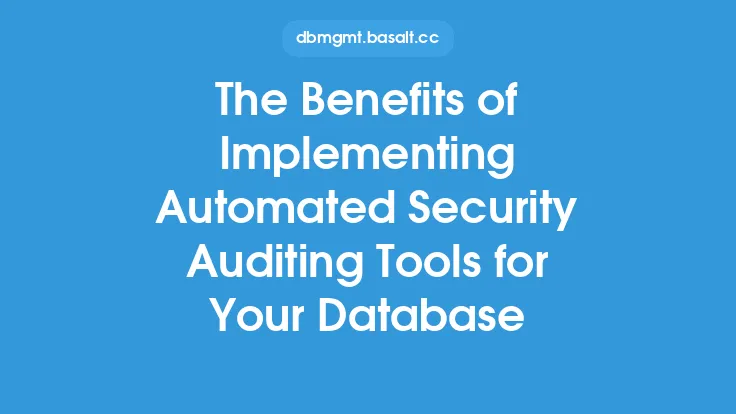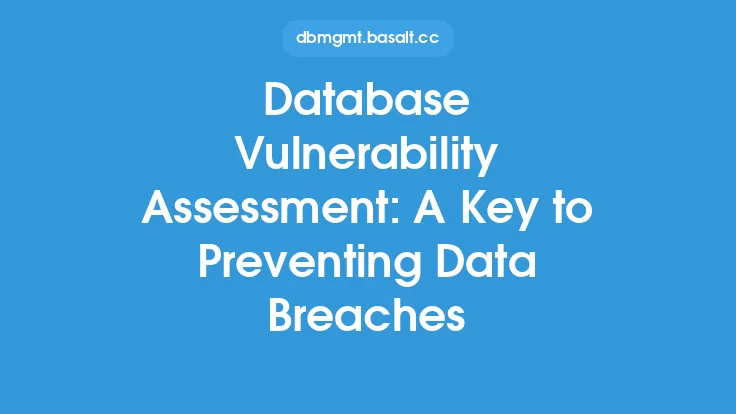Database auditing is a critical component of database administration, and its importance cannot be overstated. As databases continue to grow in size and complexity, the risk of data breaches and security threats also increases. Database auditing can help prevent data breaches by providing a detailed record of all database activities, including data access, modifications, and other security-related events. This information can be used to identify potential security threats, detect unauthorized access, and prevent data breaches.
What is Database Auditing?
Database auditing is the process of monitoring and recording all database activities, including data access, modifications, and other security-related events. This includes tracking changes to database structures, such as tables, indexes, and views, as well as changes to data, such as inserts, updates, and deletes. Database auditing can be performed at various levels, including at the database level, schema level, or object level. The goal of database auditing is to provide a detailed record of all database activities, which can be used to identify potential security threats, detect unauthorized access, and prevent data breaches.
How Database Auditing Can Help Prevent Data Breaches
Database auditing can help prevent data breaches in several ways. First, it provides a detailed record of all database activities, which can be used to identify potential security threats. By monitoring database activities, database administrators can detect unauthorized access, suspicious activity, and other security-related events. This information can be used to take corrective action, such as blocking unauthorized access or modifying database permissions. Second, database auditing can help detect data breaches in real-time, allowing database administrators to respond quickly and minimize the damage. Finally, database auditing can help organizations comply with regulatory requirements, such as HIPAA, PCI-DSS, and GDPR, which require organizations to implement robust security measures to protect sensitive data.
Types of Database Auditing
There are several types of database auditing, including native auditing, third-party auditing, and hybrid auditing. Native auditing refers to the built-in auditing capabilities of a database management system (DBMS). Most DBMSs, such as Oracle, Microsoft SQL Server, and IBM DB2, provide native auditing capabilities that allow database administrators to track database activities. Third-party auditing refers to the use of external auditing tools, such as audit logs and security information and event management (SIEM) systems, to monitor database activities. Hybrid auditing combines native and third-party auditing capabilities to provide a comprehensive auditing solution.
Database Auditing Techniques
There are several database auditing techniques, including audit logging, database snapshots, and change tracking. Audit logging involves recording all database activities, including data access, modifications, and other security-related events, in a log file. Database snapshots involve taking periodic snapshots of the database to track changes to database structures and data. Change tracking involves tracking changes to database structures and data, such as inserts, updates, and deletes. These techniques can be used individually or in combination to provide a comprehensive auditing solution.
Benefits of Database Auditing
The benefits of database auditing are numerous. First, it provides a detailed record of all database activities, which can be used to identify potential security threats and detect unauthorized access. Second, it helps organizations comply with regulatory requirements, such as HIPAA, PCI-DSS, and GDPR. Third, it provides a forensic analysis of database activities, which can be used to investigate security incidents and data breaches. Finally, it helps database administrators optimize database performance, troubleshoot issues, and improve database security.
Challenges of Database Auditing
Despite the benefits of database auditing, there are several challenges associated with it. First, it can be resource-intensive, requiring significant storage and processing resources. Second, it can be complex, requiring specialized skills and expertise. Third, it can be difficult to implement, requiring significant changes to database configurations and security settings. Finally, it can be challenging to analyze and interpret audit data, requiring specialized tools and expertise.
Best Practices for Database Auditing
To get the most out of database auditing, there are several best practices to follow. First, define a clear auditing policy that outlines what database activities to audit, how to audit them, and how to respond to security incidents. Second, implement a comprehensive auditing solution that includes native and third-party auditing capabilities. Third, configure auditing settings to capture all relevant database activities, including data access, modifications, and other security-related events. Fourth, regularly review and analyze audit data to identify potential security threats and detect unauthorized access. Finally, use audit data to optimize database performance, troubleshoot issues, and improve database security.
Conclusion
In conclusion, database auditing is a critical component of database administration, and its importance cannot be overstated. By providing a detailed record of all database activities, database auditing can help prevent data breaches, detect unauthorized access, and improve database security. While there are several challenges associated with database auditing, the benefits far outweigh the costs. By following best practices and implementing a comprehensive auditing solution, organizations can ensure the security and integrity of their databases and protect sensitive data from unauthorized access.
